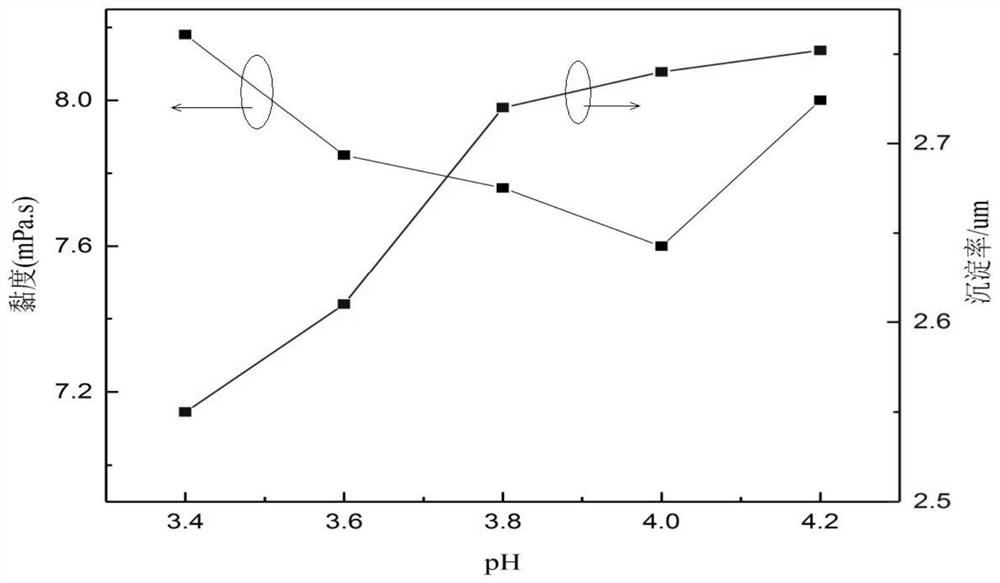Fractional extraction method and application of citrus pectin
A technology of graded extraction and pectin extraction, which is applied in the field of graded extraction of citrus pectin, which can solve the problems of insufficient pectin extraction, dark pectin color, and poor quality, so as to realize the diversification of grades and improve the utilization rate , Optimize the effect of finished product quality
- Summary
- Abstract
- Description
- Claims
- Application Information
AI Technical Summary
Problems solved by technology
Method used
Image
Examples
Embodiment 1
[0031] (1) Soak 40 g of dried orange peel in 800 mL of deionized water, stir in a water bath at 30 °C for 0.5 h, adjust the pH to 1.8 with oxalic acid solution, and stir in a water bath at 70 °C for 1.5 h. After centrifugation, the first-grade pectin extract and the first-grade pectin residue are obtained.
[0032] (2) Add 450 mL of deionized water to the first-grade pectin residue, adjust the pH to 1.7 with oxalic acid solution, and stir in a water bath at 80°C for 1 hour. After centrifugation, the secondary pectin extract and waste residue are obtained.
[0033] (3) Rotate the primary pectin extract and the secondary pectin extract at 65° C. for 0.5 h, and carry out alcohol precipitation with 1.5 times the volume of 95% ethanol solution according to the order of adding alcohol first and then feeding. and washed, then dried at 60°C to obtain 7.688g of first-grade pectin and 3.196g of second-grade pectin. The viscosity of pectin is 74.83mPa·s.
Embodiment 2
[0035] (1) Soak 40 g of blast-dried orange peel in 1000 mL of deionized water, stir in a water bath at 35°C for 1.0 h, adjust the pH to 2.0 with hydrochloric acid solution, and place in a water bath at 65°C for 2.0 h. After centrifugation, the first-grade pectin extract and the first-grade pectin residue are obtained.
[0036] (2) Add 450 mL of deionized water to the first-grade pectin residue, adjust the pH to 1.6 with hydrochloric acid solution, and stir in a water bath at 75° C. for 1.5 h. After centrifugation, the secondary pectin extract and waste residue are obtained.
[0037] (3) Rotate the first grade pectin extract and the second grade pectin extract respectively at 60°C for 1.0 h, and carry out alcohol precipitation with an equal volume of absolute ethanol according to the order of adding alcohol first and then feeding, and After washing and drying at 60°C, 7.279g of primary pectin and 3.074g of secondary pectin were obtained. The total weight of pectin obtained was...
Embodiment 3
[0039] (1) Soak 30 g of freeze-dried orange peel in 900 mL of deionized water, stir in a water bath at 30°C for 0.5 h, adjust the pH to 2.2 with nitric acid solution, and place in a water bath at 75°C for 2.0 h. After centrifugation, the first-grade pectin extract and the first-grade pectin residue are obtained.
[0040] (2) Add 450 mL of deionized water to the first-grade pectin residue, adjust the pH to 1.5 with oxalic acid solution, and place in a water bath at 80°C for 1 hour. After centrifugation, the secondary pectin extract and waste residue are obtained.
[0041] (3) Rotate the primary pectin extract and the secondary pectin extract at 55° C. for 1.5 h, and then use twice the volume of 95% ethanol solution for alcohol according to the order of feeding first and then adding alcohol. Sink, wash, and then dry at 60°C to obtain 7.036g of primary pectin and 2.832g of secondary pectin. The total weight of the obtained pectin is 9.868g, and the viscosity of primary pectin is...
PUM
| Property | Measurement | Unit |
|---|---|---|
| viscosity | aaaaa | aaaaa |
| viscosity | aaaaa | aaaaa |
| viscosity | aaaaa | aaaaa |
Abstract
Description
Claims
Application Information
 Login to View More
Login to View More - R&D
- Intellectual Property
- Life Sciences
- Materials
- Tech Scout
- Unparalleled Data Quality
- Higher Quality Content
- 60% Fewer Hallucinations
Browse by: Latest US Patents, China's latest patents, Technical Efficacy Thesaurus, Application Domain, Technology Topic, Popular Technical Reports.
© 2025 PatSnap. All rights reserved.Legal|Privacy policy|Modern Slavery Act Transparency Statement|Sitemap|About US| Contact US: help@patsnap.com

